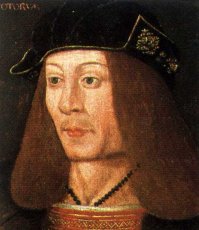With the 500th anniversary of the Battle of Flodden Field soon upon us, it seemed timely to take a look at the significance of this epic battle between the Scots and the English….
In the early part of the 16th century, England and Scotland were separate countries locked in a struggle for power. Henry VIII of England was making bold claims about being “the overlord of Scotland”, much to the anger of the Scottish King James IV. Meanwhile the “Auld Alliance” between Scotland and France was firmly in place. In an effort to aid their French allies, the Scots agreed to attack England in order to divert English forces from their campaign against Louis XII of France, and to try to take control of England for themselves.
Scots troops advanced into England and on 9th September 1513 a historic battle took place near to the village of Branxton in Northumberland. Known as the Battle of Flodden Field, the Scots were routed by the superior English forces led by the Earl of Surrey. Several factors contributed to the Scots defeat, notably the efficacy of the English bill (a long staff with a hooked blade at the end) which in part due to the nature of the terrain was able to easily overcome the Scots pike (a type of spear). Contemporary figures estimate English losses at around 1500 men, with the loss of around 12,000 Scots (some estimates put this figure much higher at around 18,000 -20,000).
Many notable Scots earls and clan chiefs were killed at Flodden, including the king himself, James IV (the last British monarch to meet this fate). Days after the battle, parliament met at Stirling Castle and the late king’s 17 month old son was crowned King James V.
Flodden ranks as the last great medieval battle fought on British soil and today you can visit Branxton village where there is a monument to the dead and an interpretative trail around the battlefield itself. There are plans to commemorate the quin-centennial anniversary of the battle in 2013 and you can find out more about events here. A great blog post on the battle itself can be found at the Freelance History Writer’s site.

Flodden & Selkirk Common Riding
Only one man, Fletcher, made it back to the small Borders town of Selkirk after Flodden bearing a captured English flag (or standard). He cast the flag above his head to indicate that all the other Selkirk men had perished in the battle. Flodden is still commemorated to this day during the Selkirk Common Riding Festival which is held every year in June. The Standard Bearer (a young man chosen to represent the town) casts the colours of the burgh in a moving ceremony which is followed by a minutes silence for those killed in war and then the playing of The Liltin’, a version of the folk song The Floo’ers of the Forest, also written to commemorate the battle. The Floo’ers of the Forest is a well known pipe tune which is regularly played at funerals and particularly at services of remembrance for British troops killed in battle. To listen to this haunting lament click here and to see the casting of the colours at Selkirk please click here.
Related posts
Whoops! No connected account found. Try connecting an account first.

